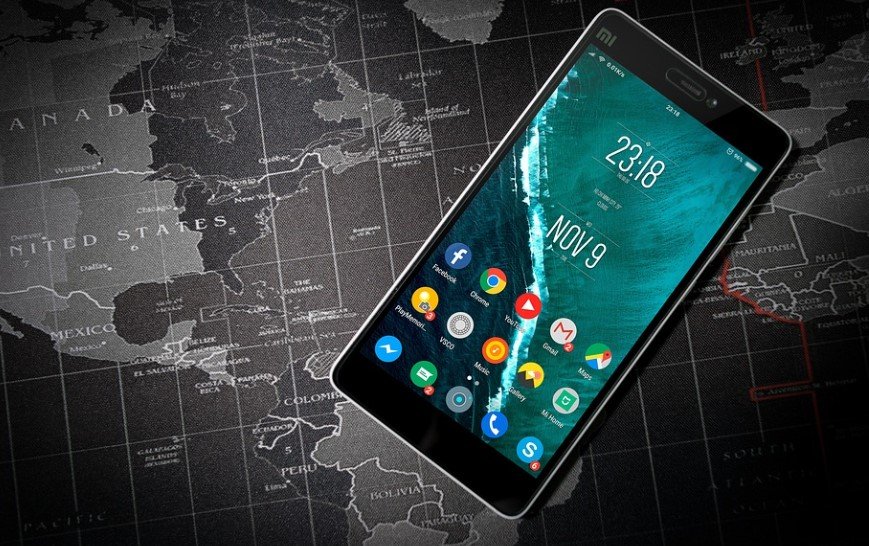Technology has revolutionized the way you live, work, and play, and at the forefront of this transformation are mobile apps. In today’s fast-paced world, mobile apps offer unparalleled convenience, accessibility, and connectivity, shaping the very fabric of our daily lives. From ordering food to managing finances, the impact of mobile apps spans across industries, enhancing efficiency and connectivity like never before. Join us as we investigate into the dynamic world of mobile apps and explore how they are truly changing the way you experience the world around you.
Key Takeaways:
- Convenience and Accessibility: Mobile apps have revolutionized everyday activities by providing unparalleled convenience and accessibility.
- Impact on Industries: They have significantly impacted industries such as healthcare, education, and finance, transforming the way services are delivered.
- Versatile Types: Different types of mobile apps including native, hybrid, and web offer unique benefits catering to diverse user needs.
- App Development Process: Involves crucial steps like planning, designing, coding, testing, and publishing, utilizing various tools to create functional and user-friendly apps.
Impact of Mobile Apps on Daily Lives
Convenience and Accessibility
Accessibility is a key trait of mobile apps, providing you with the convenience of accessing a wide range of services and information right at your fingertips. From ordering food with a few taps to booking a ride within minutes, mobile apps have revolutionized everyday activities and made them more efficient.
Connectivity and Social Interaction
For staying connected with friends and family, mobile apps play a crucial role in keeping you in touch with your loved ones. Social media apps allow you to share moments, communicate instantly, and stay updated with one another’s lives, regardless of physical distance.
Interaction through mobile apps has become seamless, whether it’s chatting with friends, joining virtual events, or collaborating on projects. With the ability to connect with people worldwide, mobile apps have transformed how we interact and engage with others.
Mobile Apps in Various Industries
Healthcare
Mobile apps have revolutionized healthcare by providing easy access to medical information, appointment scheduling, and remote consultations. Telemedicine allows you to consult professionals from home. These apps improve convenience for patients and efficiency for providers. Global revenue from healthcare apps reached $100 billion in 2020 and is expected to keep growing.
Education
Mobile apps have revolutionized education by providing access to resources, study materials, and collaboration with peers and teachers. Students can study anytime, anywhere with interactive learning experiences that cater to their needs, resulting in improved academic outcomes and engagement. Educational institutions have adopted mobile apps to make learning more accessible and interactive.
Finance
Mobile apps are essential for managing finances, offering access to banking services, budgeting tools, investments, and secure payments. With the rise of mobile banking, you can handle transactions, track expenses, and monitor investments on the go. Financial institutions use apps to improve customer experience, leading to higher satisfaction and loyalty. The revenue from mobile finance apps is projected to double by 2027, showing the industry’s shift towards meeting customers’ changing needs.

Types of Mobile Apps
For a comprehensive understanding of mobile apps, it’s important to know the different types available in the market. Whether you’re a user or a developer, being aware of the distinctions between native, hybrid, and web apps can help you make informed decisions. Here is a breakdown of each type:
Native Apps
Apps designed specifically for certain devices, native apps offer the most optimized user experience. Developed to leverage the functionalities of a particular platform, such as iOS or Android, these apps provide seamless performance and superior user interface design. By taking advantage of device-specific features like GPS, camera, and notifications, native apps deliver high performance and user engagement.
Hybrid Apps
Apps that incorporate web technologies within a native app framework, hybrid apps combine the best of both worlds. Faster to develop than native apps, hybrids can be deployed across multiple platforms while still maintaining access to device features. With a single codebase for various operating systems, developers can create apps more efficiently, saving time and resources.
To fully harness the benefits of hybrid apps, developers often use frameworks like Ionic or React Native. These tools enable them to create robust apps that can run on different platforms without sacrificing performance or user experience.
Web Apps
While not installed on the device itself, web apps are accessed through web browsers, making them easily accessible across different platforms. These apps rely on a consistent internet connection but offer the advantage of being cross-platform compatible. Although web apps may not match the performance of native apps, they provide a cost-effective solution for businesses looking to reach a broader audience.
With the continuous advancement of web technologies, web apps are becoming more sophisticated and capable of delivering a richer user experience. By leveraging progressive web app features, developers can create web apps that offer functionalities similar to native apps, including offline access and push notifications.
Mobile App Development Process
Despite the seemingly seamless functionality of mobile apps, their development is a complex and detailed process. The development journey involves several key stages, each crucial for ensuring a successful app launch. Let’s probe the intricacies of the mobile app development process to give you a better understanding of what goes on behind the scenes.
Planning and Design
One of the initial stages in the app development process is planning and design. This phase involves defining the app’s purpose, target audience, features, and overall structure. Your app’s success hinges on thorough planning and thoughtful design.
By considering user experience, interface design, and functionality from the outset, you can create an app that resonates with your audience and meets their needs. This stage sets the foundation for the development process, so investing time and effort here is crucial for a successful app.
Coding and Testing
With the planning and design in place, it’s time to probe into the coding and testing phase. This stage involves turning the conceptualized ideas into a tangible reality through programming. Coding requires attention to detail and expertise to ensure the app functions smoothly and efficiently.
Testing is equally important, as it helps identify and rectify any bugs or glitches that may hinder the app’s performance. With meticulous coding and comprehensive testing, you can create a polished app that provides a seamless user experience.
Publishing
Once the app development and testing phases are complete, it’s time to publish your app to the respective app stores. Publishing an app involves adhering to specific guidelines and requirements set by app stores like Google Play Store and Apple App Store. You’ll need to create app listings, including descriptions, screenshots, and keywords, to optimize your app’s visibility. By following the publishing guidelines and utilizing App Store Optimization (ASO) strategies, you can enhance your app’s chances of getting discovered by users and maximizing its reach.
To wrap up
Mobile apps are now essential in our daily lives, changing how we interact with the world. They simplify tasks and boost efficiency whether you’re shopping, monitoring health, or staying in touch. As technology advances, mobile apps will have an even greater impact on how we live, work, and socialize. Remember to appreciate the convenience, accessibility, and connectivity they provide. The mobile app revolution is ongoing, improving our lives and connections.
FAQ
Q: How have mobile apps revolutionized everyday activities?
A: Mobile apps have transformed daily lives by providing accessibility and convenience in activities such as ordering food, staying connected with friends, and accessing information and entertainment.
Q: In which industries have mobile apps made a significant impact?
A: Mobile apps have had a significant impact on industries such as healthcare, education, and finance, improving efficiency and connectivity in these sectors.
Q: What are the different types of mobile apps available?
A: There are three main types of mobile apps: native apps (specific device-based), hybrid apps (web technology in a native container), and web apps (accessed via web browsers).
Q: What are the key steps in the app development process?
A: The app development process typically involves planning, designing, coding, testing, and publishing the app, using tools such as code editors, compilers, debuggers, and IDEs.
Q: What are the future trends in the mobile app market?
A: Future trends in the mobile app market include the integration of AI, AR, voice-activated interfaces, and cloud-based development, driving innovation and advancement in the industry.


























